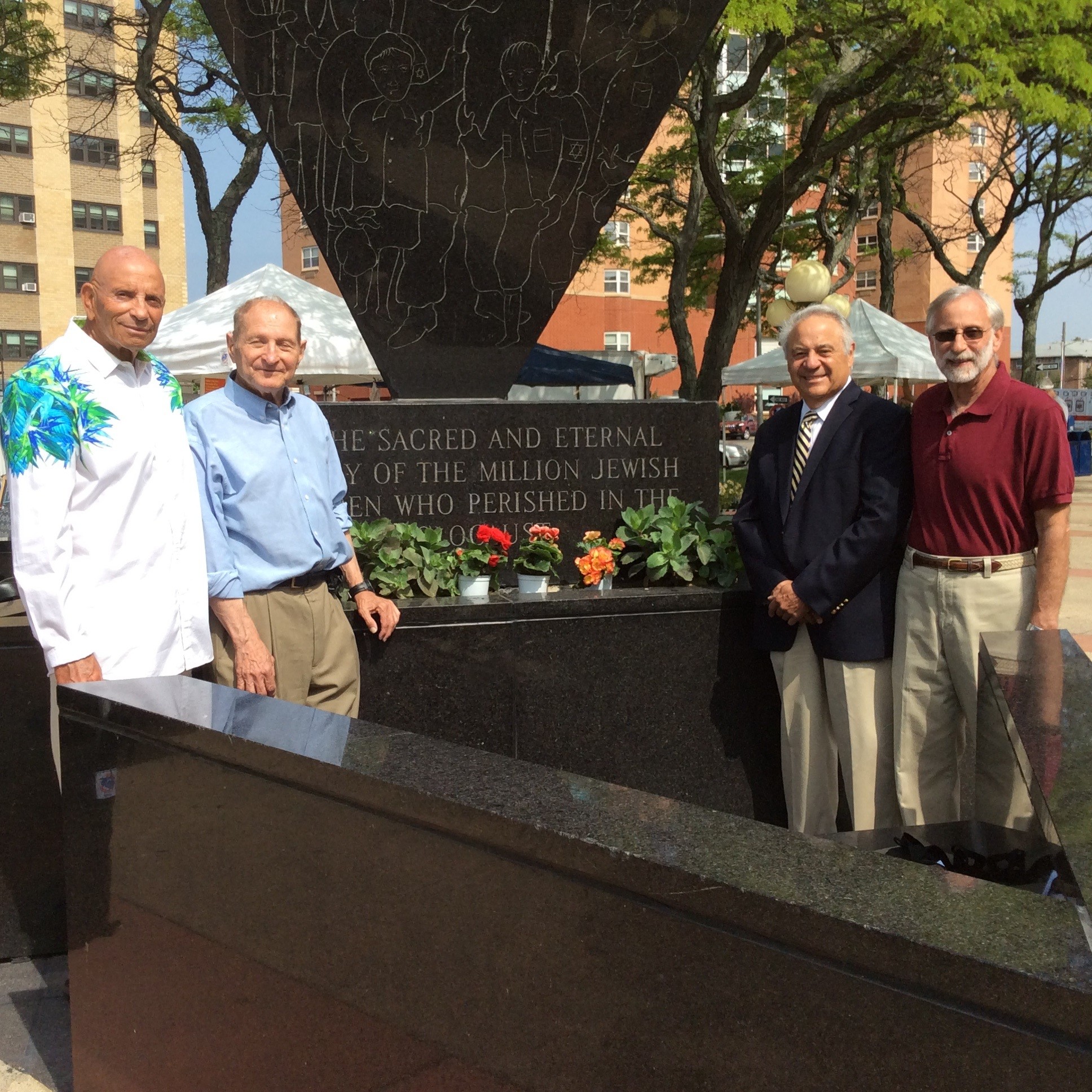Long Beach Holocaust Memorial restored
After years of decay and the physical impacts of Hurricane Sandy, local officials and residents gathered at Kennedy Plaza last Saturday to mark the completion of the two-year restoration process of the Holocaust Memorial Monument.
“It is a symbol of what this community stands for,” said former State Assemblyman Harvey Weisenberg. “The Holocaust was a catastrophe that took lives of many and this has an impact on the community because of the diversity of the population that was killed during the Holocaust.
The historical monument was installed in Kennedy Plaza in 1987, a project that was initiated by Holocaust Memorial Committee of Long Beach founder Dr. Stanley Robbin, who was also Oskar Schindler’s physician. Robbin designed the monument’s etchings and inscriptions that are engraved on the black granite, while local architect Monte Leeper worked on the structure itself.
Upon its unveiling, the memorial received international recognition and was the subject of an Austrian Broadcasting Corporation’s documentary, according to George Trepp, co-president of the Holocaust Committee of Long Island and former director of the Long Beach Public Library. But in recent years, the memorial showed signs of decay that were exacerbated by Sandy, Trepp explained.
Weisenberg, along with Bronx-based General Restoration Associates — whose president, Steven Weingarten, lives in Long Beach — helped restore the monument.
“It was in a lot of disrepair,” Weisenberg said. “My wife and I made a donation to the Long Island Holocaust Committee. The city employees will maintain this so the children from our community and people who visit Long Beach can come pay their respects.”
The monument also includes meditation benches and Trepp said that inscriptions on the three triangular panels “depict the particular lessons of the Holocaust.”
The first panel carries the legend, “To the sacred and eternal memory of over one million Jewish children, who perished in Holocaust.” It honors Janusz Korczak, who is also recognized as the “King of Children.”
According to Wikipedia, Korczak was a Polish-Jewish educator and children’s author who spent many years working as a director of an orphanage in Warsaw, Germany. He declined freedom in order to care for the children that were taken away during the Holocaust.
The second panel inscription states, “The burning bush which was not consumed,” which symbolizes the barbed wire of the concentration camps, while the drop of blood indicates the cruel murder and will of the Jewish victims to survive.
The third panel’s inscription, “The Brothers’ Keepers,” honors the righteous Christians, the Holocaust heroes, and historical figures Raoul Wallenberg, Oskar Schindler and Father Maximillian Kolbe.
“The memorial is there in memory so people do not forget what happened in World War II,” Trepp said. “Something like that has to stay vigilant, and it was necessary that the memorial be repaired.”
Weisenberg said that he felt it was vital that the monument stay in good condition, and he explained that a visit in to the Dachau Concentration Camp Memorial site played a large role in his decision to contribute to its restoration.
“It was such a monumental experience,” Weisenberg said. “To have your feet on the grounds and be able to process what happened really shows the significance of it and it’s something that really makes teaching this topic more effective.”






